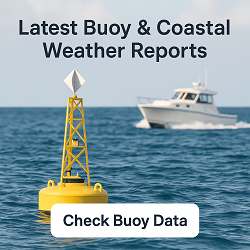Carvers, NV Weather Forecast and Current Conditions
Current Conditions

Feels Like 50°F
at
Current Conditions

Feels Like 50°F
at
Point Forecast at a Glance







7-Day Temperature Trend
Week Ahead Summary
Cooling trend continues with high temperatures dropping from 72°F to 60°F. Some rain possible with at least 2 days showing precipitation chances of 20% or higher.
Climate Context
Temperatures are expected to be near normal for this time of year, with highs around 66°F and lows around 28°F.
This Date in Weather History
1961 - Rain changed to a record early season, heavy wet snow over the southern mountains of West Virginia. Leaves were still on trees, resulting in the worst forest disaster since the fires of 1952 and 953. One to two feet of snow fell near Summersville and Richwood.
More on this and other weather history
Carvers 7 Day Weather Forecast Details
Sunday Oct 19

Day: Sunny, with a high near 72. South wind 10 to 15 mph.

Night: Mostly clear, with a low around 39. Northwest wind 5 to 10 mph.
Monday Oct 20

Day: Sunny, with a high near 65. North wind around 5 mph.

Night: Mostly clear, with a low around 42. East northeast wind around 5 mph.
Tuesday Oct 21

Day: Sunny, with a high near 70.

Night: Partly cloudy, with a low around 46.
Wednesday Oct 22

Day: Isolated rain showers between 11am and 5pm. Partly sunny, with a high near 63.

Night: Partly cloudy, with a low around 41.
Thursday Oct 23

Day: Mostly sunny, with a high near 65.

Night: Partly cloudy, with a low around 42.
Friday Oct 24

Day: Mostly sunny, with a high near 67.

Night: Mostly cloudy, with a low around 44.
Saturday Oct 25

Day: Scattered rain showers after 11am. Mostly cloudy, with a high near 60.
Sun & Moon Monthly
Sunrise 7:03 AM
Sunset 6:06 PM
Last Light 6:33 PM
Moonset ------

Contiguous United States Extremes
Sat's High Temperature
100 at 2 Miles North Northeast Of La Puerta, TX
Sat's Low Temperature
16 at 20 Miles West-northwest Of Frenchglen, OR and 5 Miles South-southeast Of Cheney, WA
Weather Folklore
If smoke falls to the ground, it is likely to rain.
Current subscribers - login to your ClearSky account
About Carvers, Nevada
Carvers (also known as Carvers Station) is an unincorporated community in Nye County, Nevada, United States. Its elevation is 5,643 feet (1,720 m). Carvers is the northernmost of the three settlements that make up the Big Smoky Valley's Round Mountain mining region. Its zip code is 89045.
Content from Wikipedia, licensed under CC BY-SA 3.0.
How We Provide Better Local Weather
Current conditions: We use the nearest available station to your location - including professional MESONET/MADIS and local weather stations - often miles closer than regional airports.
Forecasts: National Weather Service point forecasts predict for your specific area, not broad regional zones, making them far more relevant to your location.

